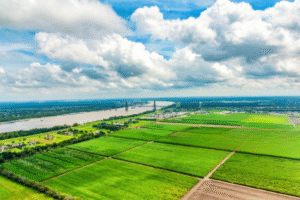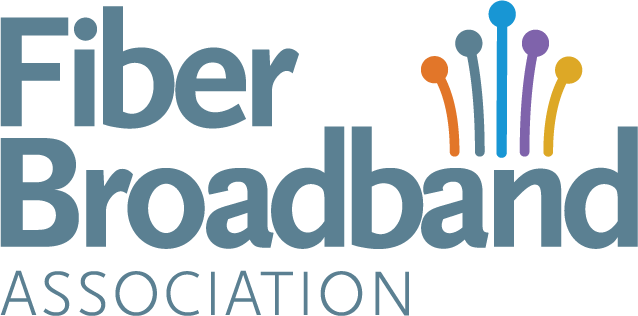FFB Week 33: Fixed Wireless & Fiber: A Winning Combination for Nextlink
Fixed Wireless & Fiber: A Winning Combination for Nextlink
Delivering high-speed internet and voice services throughout the midwest, Nextlink Internet has experienced radical, organic growth over the past decade and has become one of the largest wireless internet service providers in the nation. Nextlink differentiates itself based on an obsession with great customer service, whether the service is provided with wireless or fiber. In this episode of Fiber for Breakfast, Bill Baker, CEO of Nextlink chats with Gary Bolton, President & CEO of the Fiber Broadband Association (FBA), and talks about his humble beginnings, recent deployments, and how the industry has dramatically changed in a short amount of time.
Founded in 2012, Nextlink began as a fixed rural broadband provider serving rural North Texas. Over 13 years, the company has scaled to more than 100,000 subscribers across 12 states in the central U.S., offering fixed wireless, fiber, voice, and more recently, mobile services. Nextlink has built a reputation in rural broadband subsidy programs, participating in the Connect America Fund (CAF), the Reverse Auction, Rural Digital Opportunity Fund (RDOF), multiple state broadband grants, and now the Broadband Equity, Access, and Deployment (BEAD) program.
Baker’s background as a senior partner at KPMG’s Deal Advisory Practice and his early experience in startups shaped his approach: broadband is not a “mom-and-pop” lifestyle business — it must be scaled. From the outset, the goal was to expand reach, gain purchasing power, and position the company for growth in a market heading toward consolidation. “Even with 100,000 subscribers, we’re only just getting to real scale,” Baker noted, pointing to increased M&A activity and private equity investment as indicators that the largest fiber build cycle in history is entering a potential consolidation phase.
A Strategic Approach to Technology and Grants
Nextlink started with unlicensed fixed wireless but shifted to licensed spectrum for improved performance, acquiring over 1,100 county Citizens Broadband Radio Service (CBRS) licenses. Today, the company is the largest Tarana fixed wireless operator in the U.S., using licensed spectrum to deliver gigabit speeds over long distances and through challenging terrain. It is also expanding its fiber footprint — 30 communities completed, 100,000 passings, and about 20,000 fiber subscribers to date. Fiber deployments target small rural communities, while fixed wireless serves low-density countryside where fiber is less economical.
Participation in subsidy programs is a major growth driver. Baker sees the BEAD program as a critical opportunity but notes that each state’s technology priorities will influence outcomes. In Louisiana’s recent BEAD round, for example, Nextlink tripled its award to
$18.5 million and approximately 7,460 locations, thanks to a more favorable environment for licensed fixed wireless. Baker cautions, however, that some states are prioritizing LEO satellite service (like Starlink) in ways that don’t create lasting infrastructure or local economic activity. “With fixed wireless or fiber, you’re deploying assets, creating jobs, and generating property taxes. Awarding funds to LEO doesn’t do that,” he emphasized.
Fiber vs. Fixed Wireless vs. LEO
 Baker advocates for a “right tool for the right location” approach: fiber where it makes economic sense, licensed fixed wireless for lower-density areas, and LEO in very remote locations. But he’s critical of policy frameworks that classify LEO as “priority technology” on par with infrastructure builds. Using a generator analogy, he likens LEO to emergency backup power — useful in special cases but not ideal for everyday broadband needs.
Baker advocates for a “right tool for the right location” approach: fiber where it makes economic sense, licensed fixed wireless for lower-density areas, and LEO in very remote locations. But he’s critical of policy frameworks that classify LEO as “priority technology” on par with infrastructure builds. Using a generator analogy, he likens LEO to emergency backup power — useful in special cases but not ideal for everyday broadband needs.
In Louisiana, fiber remained dominant of around 80% of funded locations, with fixed wireless capturing part of the remainder and LEO going from 2% of the BEAD locations (in the original LA final BEAD proposal to 9%) after the Benefit of the Bargain round. Baker expects more states to face the question of how to balance fiber’s long-term benefits with the faster deployment potential of licensed wireless — while avoiding over-reliance on LEO.
Looking Ahead
Nextlink is completing CAF II commitments (five of six states finished, the last to be completed this quarter) and is halfway through its RDOF buildout. Fiber construction is active in Texas, Nebraska, and Iowa, with additional deployments planned as BEAD awards roll out. The company remains committed to rural customers, prioritizing service quality and strong customer satisfaction — reflected in its top-tier Net Promoter Scores.
Baker sees the next five years as a period of continued growth through a mix of organic expansion, grant-funded projects, and possible acquisitions as the broadband market consolidates. “We’re committed to the rural communities, and the rural countryside are the folks we serve. We’re very focused on that – the quality of service and the customer experience. That’s sort of been the keys to our success, to grow the business.”
Click here to listen to the full episode or find previous episodes of Fiber for Breakfast.




